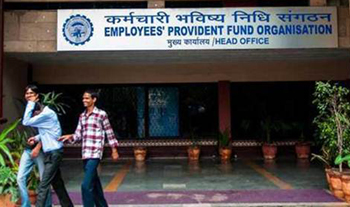New Delhi, Feb 22: Subscribers of retirement fund body EPFO can now withdraw money from their PF account using one common form and will not be required to file documents like marriage invitation cards for taking advances.
 Besides, the Employees' Provident Fund Organisation (EPFO) has also done away with the practice of filing utlisation certificates for advances taken from their PF accounts and can submit self-utlisation certificate.
Besides, the Employees' Provident Fund Organisation (EPFO) has also done away with the practice of filing utlisation certificates for advances taken from their PF accounts and can submit self-utlisation certificate.
"To add further convenience, these forms (different form for various advances and withdrawals) now have been further simplified and replaced with a single page Composite Claim Form (Aadhar). This new Composite Claim Form (Aadhar), can be submitted without the attestation of employers," EPFO said in statement.
According to the statement, subscribers who have seeded Aadhaar and bank account details to their Universal Account Number (UAN) have the facility to submit claim forms directly to the EPFO without attestation of the employers by preferring claims in Forms No 19 (UAN), 10C (UAN) & 31(UAN).
It said that for subscribers, who are yet to seed Aadhaar and Bank details with their UAN, the new Composite Claim Form (Non-Aadhar) replaces the existing Forms No 19, 10C & 31.
The new single page composite claim form (Non-Aadhar), can be submitted with the attestation of employers.
It said that self-certification replaces various certificates prescribed at present.
The Composite Claim Form (Aadhar) / Composite Claim Form (Non-Aadhar) now comes with self-certification.
Under the Para 68B of the EPF Scheme, the "New Declaration Form" required to be appended with Form No 31 for housing loan/purchase of site/house/flat or for construction/addition, alteration in existing house/repayment of housing loan is discontinued.
The requirement of "Utilisation Certificate" has also been dispensed with. No document would be required to be submitted by the subscriber in respect of these partial withdrawals, it said.
Similarly, under Para 68H, for grant of advances in case of closure of factories, no document would be required to be submitted by the subscriber.
Under the Para 68K, for the marriage advance & for availing advance for post-matriculation education of children, no document, including marriage card, would be required to be submitted by the subscribers.
Also under Para 68L, for advance in abnormal condition, the member may self-certify that his property has been damaged. No document would be required to be submitted by the subscriber.
Submission of Composite Claim Form (Aadhar) / (Composite Claim form (Non-Aadhar) duly signed by the EPF subscriber shall be construed as 'self-certification' for the said partial withdrawals, for which no document would be required to be submitted to the EPFO offices, it said.





Comments
Add new comment